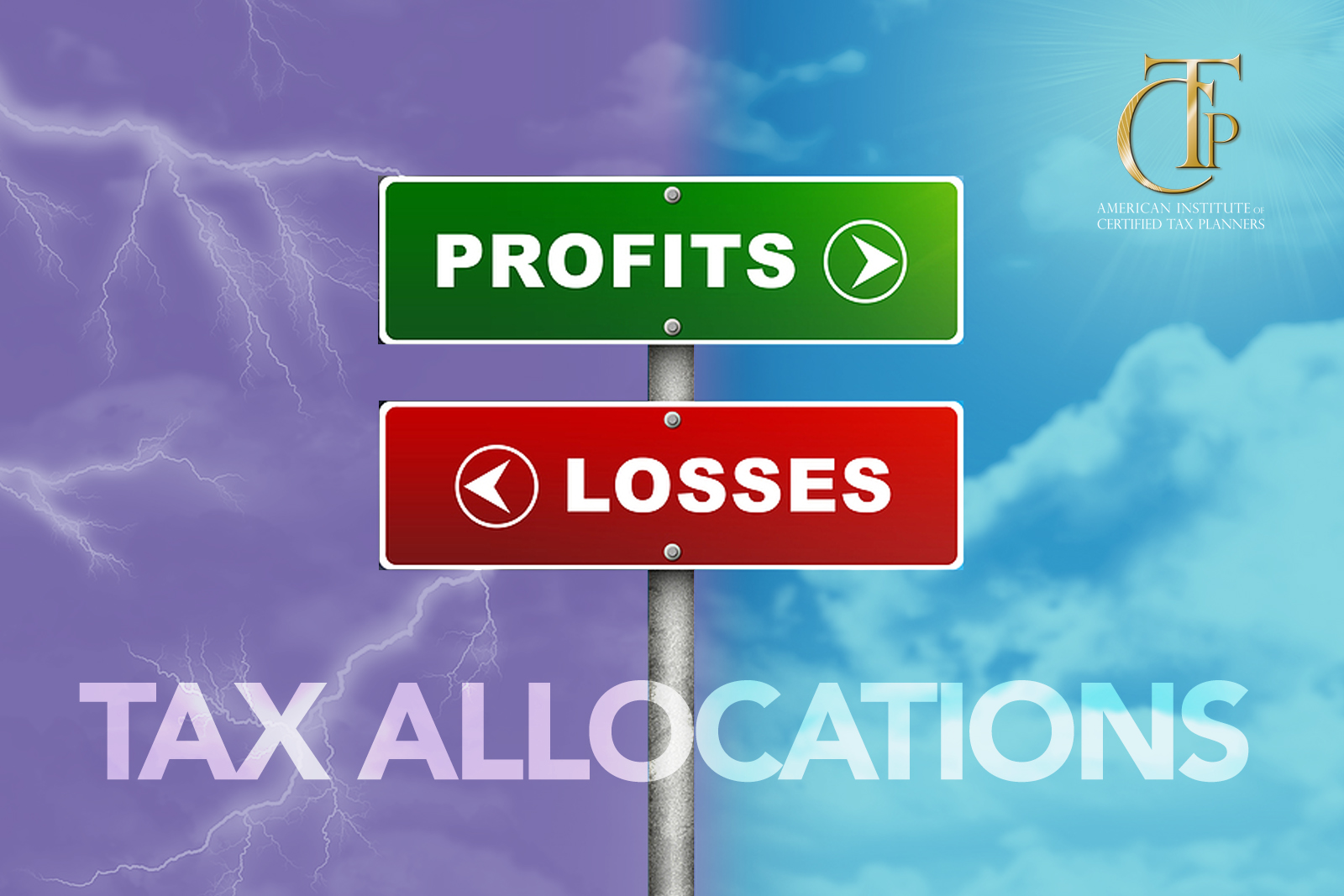One of the hidden benefits of setting up your business as a partnership is the ability to use special tax allocations. Because a partnership is a pass-through entity, income, losses, credits, and deductions “pass through” to the business owners who are taxed at personal income tax rates. Special tax allocations allow the partnership to distribute these profits and losses to the partners in the most advantageous way, regardless of the percentage of the business each person owns.
Before claiming these special tax allocations, you will need to make sure your partnership is following any pertinent partnership rules, which can be found in Section 704 of the tax code. Any special allocations you claim must reflect what is explicitly stated in your written partnership agreement. If at any time, your partnership decides to adjust the percentage of the business items (such as income, losses, deductions, and credits) belonging to each partner, you will need to officially amend the agreement with the help of an attorney. You will also need to understand what you are trying to accomplish from a tax perspective, so your attorney can use the correct language in that amendment.
Secondly, the partnership agreement needs to have “substantial economic effect” to make use of special allocations. If this is lacking, then the IRS can simply ignore your attempt to make a special allocation on your tax returns and instead allocate the profits and losses based on ownership percentage. What is substantial economic effect? This basically means that your partnership cannot artificially allocate income, losses, deductions, and credits just for the purposes of your tax returns. The allocations should instead match the actual economic effect on each partner.
Below we define the three different ways to prove substantial economic effect:
- Economic effect test
- Alternate test
- Economic effect equivalence test
Economic Effect Test
How does the economic effect test work? Simply put, if a partner receives a benefit from the partnership (such as income or gain), they should also receive the corresponding tax consequence. The same is true if a partner takes on a financial burden (such as loss or risk). Any tax deductions or credits related to that item should go to that partner. For example, if a partner is allocated a business asset that depreciates, those items will be worth less in the future should that partner want to sell them. However, that partner will also be able to benefit from a tax deduction for that depreciation.
Another way of looking at it is to consider what would happen if the business is liquidated—if all assets are sold to pay off the business’ debts. Economic effect says that if a partner receives a tax benefit, this should have an equivalent impact on the amount of cash that partner would receive if the business was liquidated.
Fortunately, the IRS has defined an economic effect “safe harbor” with three requirements. If these requirements are met, the partnership is protected against any IRS challenges to the special tax allocations we have claimed:
- The partners’ capital accounts must be maintained in accordance with Section 704(b)
- Any distributions that would liquidate a partner’s interest must follow ending capital account balances
- If a partner’s interest in liquidated and they have a negative capital account balance, they must restore that deficit
Consult with a Certified Tax Planner to determine if your business is set up to meet these requirements before attempting to claim special tax allocations.
Alternate Test
The alternate test is similar to the economic effect test—in fact, to pass the alternate test, you still need to meet the first two requirements listed above. Secondly, if any partners’ capital accounts have a negative balance, this deficit must be restored, and the partnership agreement must dictate that deficits be restored. Lastly, the partnership agreement must also have a “qualified income offset.” This means that if an unexpected event creates a deficit balance, then the partner must be allocated an item of income to eliminate that deficit as quickly as possible.
Economic Effect Equivalency Test
This last test is in place if a business fails the first two, fairly easy-to-pass tests. The business type that might struggle to pass these tests is a limited partnership because limited partners cannot be legally required to restore a deficit balance in their capital account.
How can a limited partnership demonstrate economic effect? Economic effect still exists if the liquidation of the partnership at the end of any year would produce the same economic results as if the company had passed the safe harbor tests. So the partnership would need to compare these two hypothetical scenarios: what would happen if the company liquidated at the end of the tax year and what would happen if the company was able to follow the rules of the economic effect safe harbor test? The latter must be evaluated regardless of the economic performance of the partnership.
A limited partnership may need to revisit its partnership agreement to meet this final test. Let’s say that in the agreement, Partner A receives a distribution of all the property in the business, while Partner B receives a distribution of all the cash in the partnership. If at the end of any year, these distributions represent the same economic results as the tax allocations, then this setup meets the substantial economic effect test. If not, the agreement may need to be adjusted if the business hopes to benefit from special tax allocations.
Summary
Special tax allocations can provide incredible benefits to partners if the agreement is set up to allow for them. Remember that it is possible to adjust the agreement to match your tax allocations—with the help of an attorney who is well-versed in tax law. Partnership entities can be worthwhile just because of this flexible tax planning option that allows each partner to receive the gains and losses they need.
For expert assistance navigating special tax allocations and making the most of the benefits, get connected with a Certified Tax Planner today.





